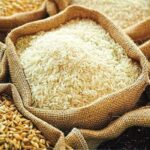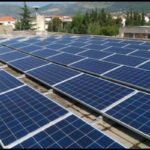The IMF's upgraded forecasts and falling inflation suggest the recovery gamble is paying off. But the excitement will be premature.
When the International Monetary Fund raises a country's growth forecast not once but twice in three months, markets sit up and take notice. When that country is Nigeria – notorious for persistent inflation, oil dependence and false starts – the focus becomes even more intense. The fund's October World Economic Outlook estimates Nigeria's economy will grow 3.9 percent in 2025 and 4.2 percent in 2026, up 0.5 and 0.9 percentage points, respectively, from its July forecast. With inflation falling dramatically to 18.02 percent in September—reading below 20 percent for the first time in three years—Africa's largest economy appears to have turned a corner. Yet this story is one of little, temporary affirmation of victory. The numbers confirm what many had hoped privately but few dared say publicly: the painstaking reforms undertaken since President Bola Tinubu took office in May 2023 – the removal of costly petrol subsidies, the unification of multiple exchange rates and a tight monetary policy stance – are finally bearing fruit. But the light at the end of the tunnel is still far away, and the tunnel is still full of obstacles.
Also read: Founders, investors leverage value creation, collaboration to drive Nigeria's economic future

improvement premium
The IMF's advanced forecast is based on what economists call “supportive domestic factors.” Translation: Nigeria has started to do things right. The Naira, which was trading at over $1,900 on the parallel market earlier this year, has appreciated significantly since the Central Bank of Nigeria (CBN) cleared its forex backlog and restored transparency in the forex market. External reserves have increased to $42.63 billion as of mid-October, supported by improved oil production, migrant remittances and portfolio flows. Investor confidence, the weakest of economic sentiments, has strengthened. Perhaps more critically, Nigeria's limited exposure to the new wave of global tariff wars – particularly protectionist measures emanating from Washington – has kept it insulated from the economic headwinds affecting more trade-dependent economies. While advanced economies are projected to grow at 1.5 percent and emerging markets are facing recession, Nigeria has managed to buck the trend. The IMF's Danz Egan said that “low uncertainty and Nigeria's limited exposure to US tariffs” have been key drivers of the upgraded outlook. The fund also revised its 2024 growth forecast to 4.1 percent, reflecting the authorities' GDP rebasing exercise, which now includes previously underreported sectors such as the digital economy, informal agriculture and modular refining. This is no statistical sleight of hand; It presents a more honest account of what Nigeria's economy actually produces. The oil sector, once an engine of growth, now accounts for only 4 percent of GDP, down from 8 percent in 2021. The economy is diversifying, slowly but surely.
“The recalibration of the consumer price index by the National Bureau of Statistics, which shifted the base year from 2009 to 2019, is part of the technical decline.”

Dramatic Surrender of Inflation
If the IMF upgrade was a vote of confidence, September's inflation data was a deserved compliment. Headline inflation fell to 18.02 per cent from 20.12 per cent in August – a decline of 2.1 percentage points in a month. This marks the sixth consecutive month of decline and represents a stunning 14.68 percentage point decline from the 32.7 per cent recorded in September 2024. Food inflation, the scourge of Nigerian households, fell to 16.87 percent from 21.87 percent in August due to a sharp decline in the prices of maize, gari, beans, millet, potatoes and other staple food items. More notable still: Nigeria recorded month-on-month food deflation for the first time in 13 years, with food prices falling 1.57 percent in September. This is not just a statistical oddity. This reflects the start of the harvest season, improvements in farm-to-market logistics and, importantly, a reduction in insecurity in key agricultural areas. For a country where families spend up to 70 percent of their income on food, this is nothing less than a lifeline. But context is everything. The recalibration of the consumer price index by the National Bureau of Statistics – which shifted the base year from 2009 to 2019 – is part of the technical decline. The IMF, always realistic, projects that average consumer prices will decline from 31.4 percent in 2024 to 23 percent in 2025 and 22 percent in 2026. Inflation at the end of the period is projected to be 21 percent in 2025 and 18 percent in 2026. Translation: While the trajectory is positive, the absolute level of prices remains punishingly high.
Also read: Representatives are taking steps to protect private investment from economic loss

per capita problem
This is where enthusiasm should be tempered. The 3.9 percent GDP growth rate may sound impressive on paper, but against Nigeria's population growth rate of about 2.4 percent per year, the real gain in per capita income is a modest 1.5 percent. This does not sound like prosperity for a country with a population of 237.58 million and growing. This is the mathematics of marginal improvement. Furthermore, the economy faces the structural challenge of absorbing an estimated 3.5 million new entrants into the labor force annually. Strong GDP growth alone will not solve this problem without targeted reforms to improve the ease of doing business, address chronic power shortages, and expand access to credit for small and medium-sized enterprises. As Bismarck Raven, CEO of financial derivatives company, rightly said, “Without comprehensive power solutions you cannot grow the economy at the pace we have seen today.”
Weak profits, constant risk
September inflation data provides solid relief, but gains remain fragile. Food inflation is inherently volatile, and the structural issues that have plagued Nigeria's agricultural sector – insecurity in food-producing areas, inadequate power supply, poor infrastructure – have not been addressed. The recent increase in fuel prices following the removal of subsidies has already begun to impact the economy, increasing transportation and energy costs. The IMF's projection of 23 percent average inflation for 2025 is a reminder that the fight is far from over. Nigeria's current account surplus, which stood at 6.8 percent of GDP in 2024, is expected to narrow to 5.7 percent in 2025 and 3.6 percent in 2026 as higher imports offset oil export gains. The CBN cut its benchmark interest rate by 27 per cent in September for the first time in five years, so it will need to tread carefully. Premature easing of monetary policy could lead to a resurgence of inflationary pressures, erasing last year's hard-earned gains.
Also read: Nigeria sees science as new economic engine
Decision
Nigeria's economic story in 2025 is one of cautious optimism. The IMF's upgraded growth forecast and dramatic decline in inflation are welcome developments, indicating that the reform agenda is starting to work. But this is a marathon, not a sprint. To translate these medium-term projections into sustained, inclusive growth, Nigeria must deepen its structural reforms: fixing the power sector, securing agricultural sectors, improving infrastructure, and mobilizing domestic revenues through effective tax measures. For now, the light at the end of the tunnel is getting brighter. But Nigeria is still deep inside the tunnel. Prudence, not celebration, should be the order of the day. The bitter medicine is working, but the patient has not yet recovered.
Dr. Oluyemi Adeosun, Chief Economist, BusinessDay Media











